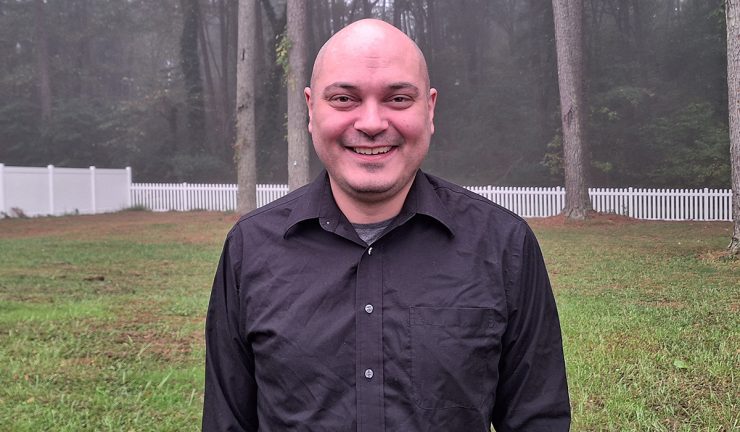Today, television viewers have more choices than ever when it comes to what to watch, but that might not be a good thing, according to Joseph Michael (Lightning) Czabovsky ’07.
Czabovsky, who majored in television production and broadcasting at Chapman University, is a professor of public relations and advertising at the University of North Carolina at Chapel Hill, where his work focuses on diversity in media and measurement methodology.
Throughout his career, Czabovsky has had a particular interest in diversity in the media. His Ph.D. dissertation was about Michael Sam, who in 2014 was the first high-profile, openly LGBTQIA+ athlete to get drafted into the NFL. While originally expected to be an early-round draft pick, Sam was not picked by the then-St. Louis Rams until the seventh round of the draft, a drop that many suspected was tied to Sam speaking publicly about his sexuality.
“There was a lot of discussion of such an athlete being a distraction,” Czabovsky says. “Distraction was a keyword, and so I did a deep dive into [questions such as] where do all these networks funnel from? Who creates these? Is it one or two comments that then become the perception of reality?”
The answers, says Czabovsky, are complicated.
Marketing Queerness in the Mass Market
As an undergraduate in Dodge College of Film and Media Arts, Czabovsky was able to make time between his production classes to study sociology with professor emeritus Paul Apodaca. One course in particular, “Indians and Film”, made a lasting impact.
“One of my biggest takeaways from that class – I think it really shapes everything in my life – was [Apodaca] saying, ‘It’s complicated, isn’t it?’” Czabovsky says.
“If you have a[n indigenous actor such as] Wes Studi in your film, it might be viewed as progress, but on the other hand, are these actors representing different tribes, or is the film that’s including indigenous actors actually speaking to their truths and their cultures?”
At the time, the film “Brokeback Mountain” was garnering attention for its depiction of the romantic relationship between two American cowboys, and Czabovsky – who was in the midst of coming out himself – became fascinated with how the movie was marketed in the media. Ads for the movie used images of Heath Ledger and Michelle Williams looking miserable at their wedding, or Jake Gyllenhall and Anne Hathaway with the birth of their child.
“If you didn’t know anything about the film, it looked like a film about two straight couples,” says Czabovsky, who has since completed multiple studies about how LGBTQIA+ films are marketed.
His studies have shown that the more widely released something was, the less LGBTQ content there was in the marketing.
“The film might be about LGBTQ characters, but if we’re releasing it to mass audiences, we kind of hide that in the marketing materials,” he says.
How Technology Further Divides Public Opinion
Nearly 20 years later, there is more LGBTQIA+ content available than ever. However, thanks to the algorithms that drive viewers in today’s streaming entertainment marketplace, it may be that fewer people are actually seeing it.
“In the 1970s, if you had really progressive content, people were still watching the main four networks,” he says. “When a movie like ‘The Birdcage’ came out in the 1990s, everybody could see it just by going to the movie theater. These days, even though there is more LGBTQIA+ and other minority content, it’s often streamed only to the people that want to watch it.”
Algorithms in film and television tend to reinforce what someone already likes. That might be more efficient from either a marketing or a business model, “but as a society, think about how even though we have more content than ever, it actually means we have fewer mutual stories,” Czabovsky says.
“If you’re a conservative in the middle of Wyoming, and you love ‘Yellowstone’, you’ll never see LGBTQ content be recommended to you or, very rarely,” he says. “And that’s the irony. On one hand, we have made so much progress. On the other hand, technology actually further divides us.”




